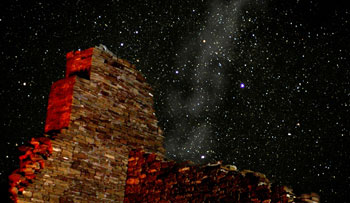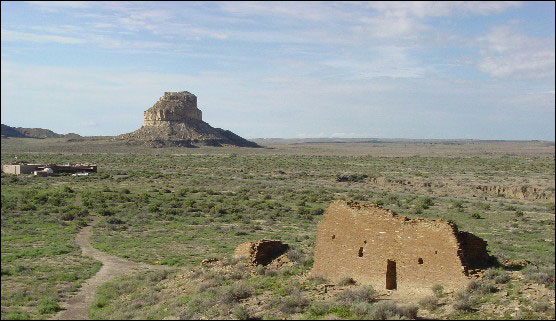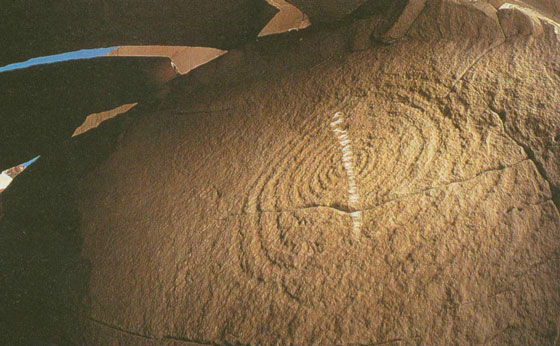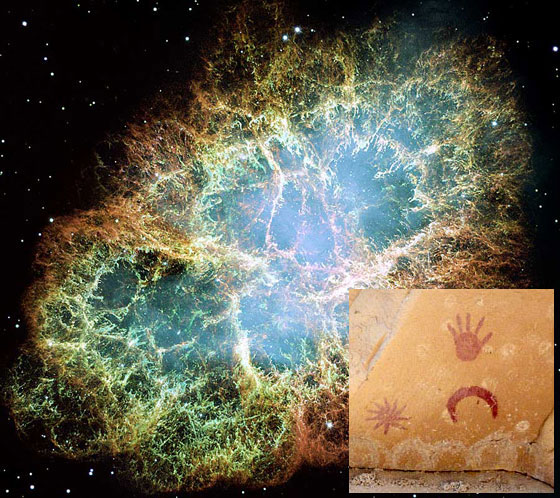
Celestis’ 7th Earth Rise Service mission, The Tribute Flight, is dedicated to all of those represented on board the mission, as well as to the ancient Native Americans of northwestern New Mexico whose thousand-year-old architecture speaks of a culture that was very much in tune with the motions of the Sun, the Moon and the stars — much like the people on board Celestis memorial spaceflights who, in life, wondered at the beauty and majesty of the heavens above. In this article we explore some of the ancient art and architecture of the people who lived in Chaco Canyon, New Mexico a millennium ago.
American Indian peoples have continuously occupied the Colorado Plateau of the Southwest for over 10,000 years. From about AD 860 – 1150, the people of Chaco Canyon (in modern New Mexico) created monumental public and ceremonial buildings, most of which were precisely aligned along north-south lines. Although the Chacoan people did not leave a written record, the archaeological evidence suggests that shamans (basically, Chacoan priests) used markings on these buildings and on nearby cliffs to determine the exact onset of astronomically-significant events, such as the precise dates of the changing of the seasons. These events not only would prove practical for their agricultural-based society, but would also likely mark the time periods for significant ceremonial/religious events.

Without a written record, interpreting exactly how the Chacoans used their astronomically-aligned buildings and significant landmarks is much like interpreting how the ancient people of Great Britain used Stonehenge. Perhaps the most prominent interpretation of Chacoan culture has been made by Anna Sofaer of The Solstice Project. In the 1970s Sofaer discovered the famous “Sun Dagger” phenomenon on Chaco Canyon’s Fajada Butte: This phenomenon reads like something straight out of a Raiders of the Lost Ark movie. Each year on the summer solstice (when summer begins in the Northern Hemisphere) a narrow ray of sunlight shines through a set of massive stones and strikes the exact center of a spiral diagram etched long ago by Native Americans on a side of Fajada Butte. Rays of sunlight strike other, significant parts of the spiral diagram on the days that mark the onset of fall, winter and spring. Sofaer’s study of Chaco Canyon formed the basis of a 1982 PBS documentary narrated by Robert Redford called “The Mystery of Chaco Canyon.”

While scholars debate why the ancient people of Chaco Canyon built their fascinating buildings and perfectly aligned roads stretching miles into the desert, there can be no doubt that the Chacoan people placed great emphasis on observation of the Sun and night sky. Surely they felt the same way about the cosmos that many of us do today — that we are all part of, and connected to, the universe.
In many Native American cultures the Milky Way is interpreted as a bridge over which the souls of the dead walk to the afterlife. As Celestis launches departed loved ones into the New Mexico sky, we are fulfilling long-held dreams of travel amongst the stars. So it is appropriate that we dedicate our next Earth Rise mission to the ancient peoples of Chaco Canyon.

